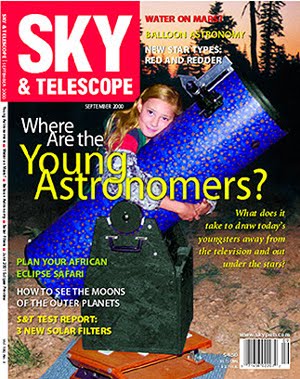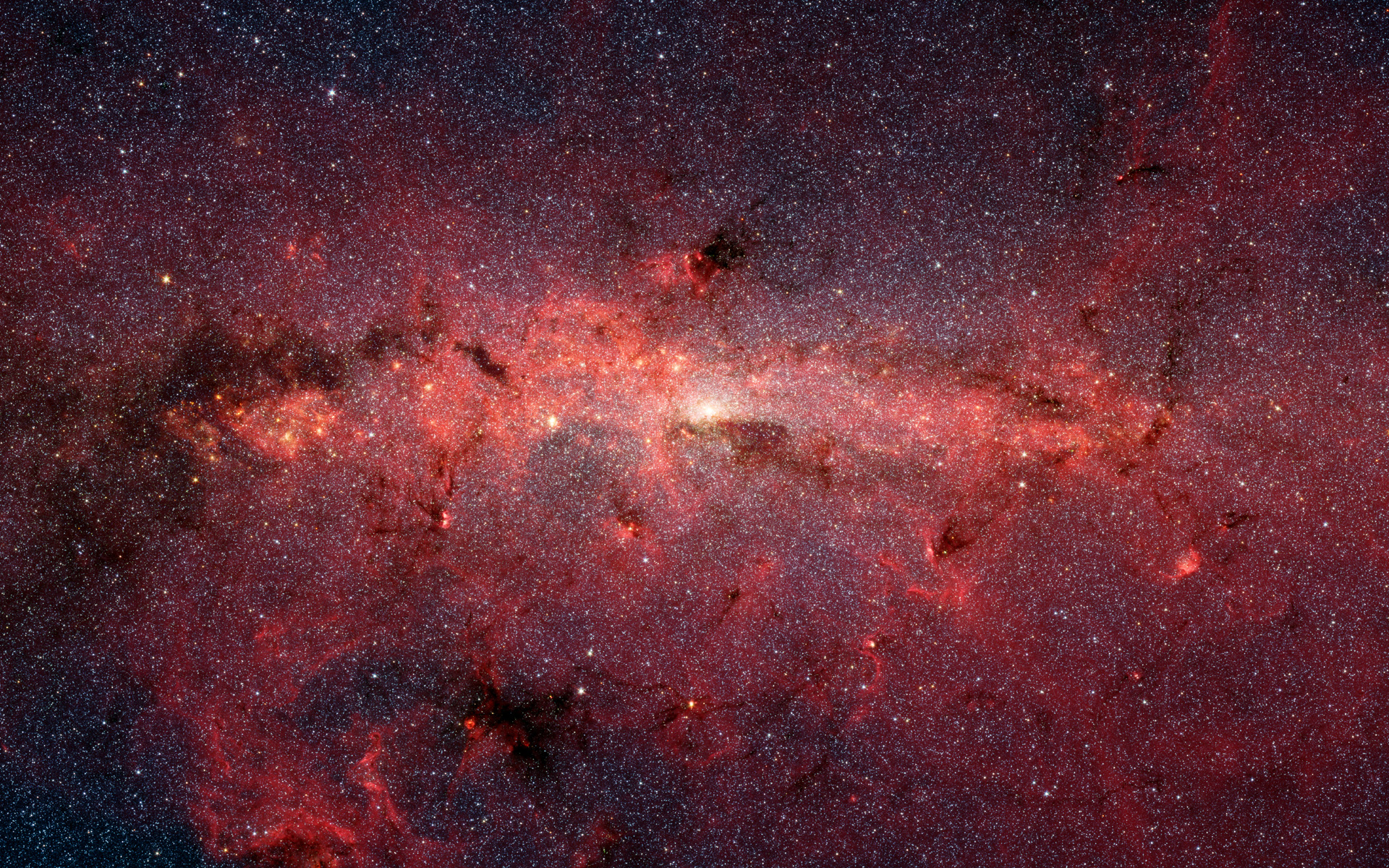My 10 f/5.6 Dob has been sitting in my backyard this week. Telrad covered, dust cover in place. I was going to observe Wednesday night, but fog and low cloud moved in early. When I saw the weather report on last night's early news, I knew the sky would be clear and I looked forward to a quiet night looking through the 20 Nagler and playing with my set of Astro Cards. Sounded perfect!
Around 9 p.m. I went out and began.
My first target was IC 1396 in Cepheus. This cluster is embedded in a large dim nebula. The cluster is large, and not really difficult to identify. In brightish suburban skies the finder I use, a 10 x 70, showed almost exactly the view on the Astro Card... Mu Cephei and a chain of 3 stars in a line, mag 5.7 and a pair at mag 6.5. A tight set of three dimmer stars were outstanding in the cluster, a bright one flanked on opposite sides by a dimmer pair. The cluster itself seemed no problem, lots of stars appearing associated in this area, but there was at first no signs of any nebulosity. But after a little while, a hint of nebula began to appear a18' north of the triple star. I have not confirmed the nebula. There also seemed quite a bit of haziness... kind of granular, throughout the area.
I next moved to NGC 7209, a mag 6.7 open cluster in Lacerta. This area was more difficult than I am accustomed to in my backyard, since it is much more northerly than most my targets, and San Jose is north of my house (and virtually walking distance away), and the constellation stars range from mag 3.8 to 4.6. The sky to the south is much better... I once logged a mag 5.8 star overhead from my house. NGC 7209 was fun, containing about 12 brighter stars with many many more dimly forming a haze around and through the brighter members. A brightish star sits 14' WNW and a dimmer one 12' S of the cluster. This cluster is a nice view.
To challenge myself a bit, I decided to try for NGC 7217, a mag 10.2 galaxy near the double star 29-Pi Pegasi, the front foot of Pegasus. This one was fun to hop to with the finder, and soon I was seeing a 3' dim glow 3' W of a mag 6 star (The Sky has the galaxy misplotted directly on the star). A dimmer group of stars is also close by, 4-'5' N. The surface brightness of 7217 is 12.7, not a bad find for backyard observing!
I didn't plan to stop observing so early, but two open clusters in the bright skies around Cepheus were my last objects. NGC 7261 is about 6' in size and has a few brighter stars standing out among a large number of dimmer ones. This is a rich field, in the Cepheus Milky Way, between 21-Zeta, 23-Epsilon and 27-Delta Cephei, a nice small naked eye triangle of stars at the eastern base of the constellation. Nearby, I was able to find NGC 7235, another open cluster (there are 3 in the area). This one was about 5' in size... small and having one bright star involved with perhaps 4 dimmer ones overlaying many very dim components... nice eyepiece view, easy to identify.
While looking in Cepheus, my daughter Mimi, Ms. Messier Monster, stepped outside and asked if she could find something, maybe just one or two objects. She was patient while I finished in Cepheus, and I turned over the oversized scope to her. The f/5.6 on a tall base is much more difficult for her to manage than her 10" f/4.5.
It had been a long time since we did Monster Astronomy... she swung the scope up toward The Ring Nebula. She reminded me it was the first object she ever found, and was still her favorite do to its unique status. I looked, it was a nice view.
"What's next dad?" I'd heard that before, and I knew what it meant. My night was done. Mimi was at the eyepiece and I was now along for the ride.
I suggested M11, the Wild Duck cluster in Scutum. Describing the arc of stars visible naked eye, Mimi immediately remembered the object being about where the "missing" star in the arc would be. Swinging the scope around, she reminded me M11 was my friend Alan's favorite object. What a beautiful view, even in a 10" from in town. Alan had good taste!
Mimi was now in full observing mode. "Next" she said.. I asked if she wanted something a bit more challenging to find. M92 was high, but past zenith and falling now toward the western horizon. Mimi was using her Astro Cards (I bought them for her), and quickly found the globular. Looking at the card again, she noted that NGC 6239 and NGC 6229 were nearby. I told her 6239 was a galaxy and too dim for our backyard (mag 12.4), and suggested she try for, but not expect to get 6229. After some miscalculation, mistakenly aiming for 6239, she dropped on 6229. The small globular cluster shown easily. Nice find Mimi!
Next, just for fun, knowing just where to go, she bopped over to M13. Nice view.... very big and bright after the prior small glob.
Again, more challenge. I always have trouble with M14, so I tested Mimi. Using the eastern-most star along the bottom of Ophiuchus (35-Eta Ophiuchi) and 62-Gamma Ophiuchi to locate mag 4.5 SAO 141665, Mimi was on the globular with uncanny speed. I'd always remembered this one as a ho-hum object, but I must admit it is a very nice object!
Wanting more, I suggested Mimi try M22. Showing her the Astro Card, she was at the scope and saying the familiar "I think I've got it" that I heard all last year. Nice view! The cluster is large and very rich. From there, she moved west to M28, which she described as small and bright. Looking again at the Astro Card, Mimi went after NGC 6638, a small globular just east and below the tip of the teapot. Bingo! I was very surprised she found it, but it was obvious in the 20 Nagler.
Over the next hour, Mimi went on to log M27, which we looked at with a 2" UHC filter. She loved this object, and proceeded to describe to me the processes that took place to create what we see. Next to M71, buried in the star fields of Saggita. On to M56, comparable but a bit brighter than M71... and in an easy location between Sulafat (14-Gamma Lyrae) and Alberio.
Wanting to continue, she asked again for more challenge. The little globular NGC 6934, off the tail of Delphinus, was next. She scanned around for a bit, then said she thought it was in view. Sure enough, nice, somewhat dim, small.
Next to M15. Mimi enjoyed the bright and small core of this globular. I told her the cluster was collapsing, and that is why the core was so dense compared to the remainder of the object. She wondered if it would eventually form a black hole.
It was now getting late, near midnight. I had planned a couple hours at most to observe, but the Monster was having so much fun. She wanted a few more objects.
I showed her a card with NGC 6940, which I had seen earlier in the week. Cygnus was almost directly overhead, and it was quite a sight to see a little 12 year old pointing a scope nearly twice her height into that position. But before I knew it, she had the large bright cluster. A quick detour over to 52-Cygni, but no Veil Nebula showed. We put in the OIII filter, and suddenly the magical strands of supernova glowed in the field of view. Mimi asked if the filter allowed only certain types of light through. Good thinking!
She again asked for some challenge. I suggested NGC 7331 in Pegasus. This galaxy is mag 9.5, but its large size gives it a surface brightness in the 13's, which is why it can be elusive in the city. Using Matar (44-Eta Pegasi) and the close naked-eye pair 48-Mu and 47-Lambda Pegasi as pointers to the right position, Mimi put a very nice view of the galaxy in the eyepiece. She described it as elongated.
The final object I gave her, on an Astro Card, was NGC 6811, a nice small open cluster just off the tip of the eastern wing (18-Delta Cygni) of Cygnus. In no time, she was showing me a small but distinct cluster. Very nice.
Telling her it was after midnight now, and I had to work in the morning, she took the scope and swung it back over to M57. That is where it all began for her. A memorable favorite.
While I hadn't planned to stay out so late, or to turn my observing session over to my daughter, I have to say, it was a monster of a good time. I think I'll take her out observing again tonight.












No comments:
Post a Comment